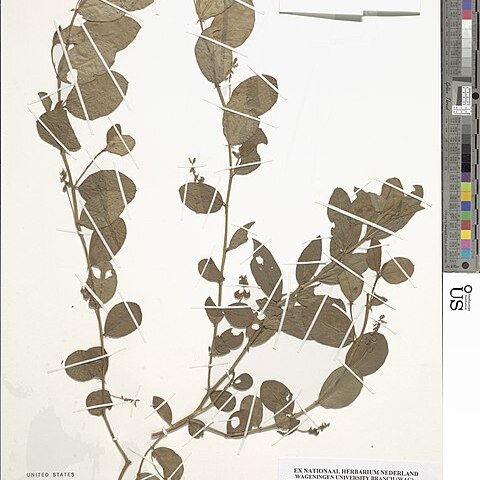Prostrate or erect annual, occasionally rooting at the nodes.. Stem often flattened, sparsely strigulose.. Leaves simple; stipules ± subulate, 2–3 mm. long; petiole 1–2 mm. long; blade elliptic to broadly lanceolate, 2–4 cm. long, 1.5–2.5 cm. wide, sometimes with a cartilaginous margin less than 0.1 mm. wide, obscurely gland-dotted beneath, appressed-strigulose above (in Flora area) and beneath, the hairs at the margin set at right-angles to it and rather larger than the others.. Racemes 10–15-flowered, 3–4 cm. long, including a peduncle of 1–1.5 cm.; pedicels reflexed, ± 1 mm. long.. Calyx ±2.5 mm. long; lobes several times as long as the tube.. Corolla pointed in the bud, strigulose outside, hardly longer than the calyx, very caducous.. Stamens 2–3 mm. long.. Ovary 2-ovulate, 1 ovule usually much reduced.. Pod indehiscent, brown, falcate, triquetrous, ± 7 mm. long, 4 mm. wide and 4 mm. thick, the 2 lower angles beset with stiff ± hooked spines, 1 (rarely–2)-seeded.. Fig. 35/12.

